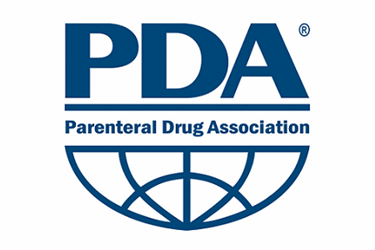PDA Position Paper: A Call For Reform In Global Post-Approval Change Processes

By the PDA Post Approval Change: Innovation for Availability of Medicines (PAC iAMSM) Task Force*
The seamless delivery of high quality, effective, and safe medicines to patients is each drug company’s ultimate duty. However, providing medication to patients is by no means effortless, as evidenced by the drug product shortage listings on health authority websites. The availability of medicines is challenged by a variety of factors, one of which is global supply chain segmentation due to global regulatory hurdles imposed on product related post-approval changes (PACs).
PACs are performed for several reasons. New and updated regulatory requirements must be implemented in order for companies to remain compliant and often result in PACs. As the knowledge on a product continually increases during its commercial life, companies might also have a need or desire to improve the manufacturing process or analytical methods. Additionally, changes in suppliers, evolution of technologies and innovation, ongoing risk management, and continual improvement can also result in the need for PACs.
Today, most companies operate globally; therefore, PACs are intended to apply globally. However, many PACs require approval by the national regulatory authority of each country prior to the delivery of products made with improved processes or methods. In practice, this can result in submission to and assessment of change filings by more than 100 individual countries and regulatory authorities.
Regulatory PAC processes worldwide can be characterized as complex and inconsistent for many reasons, such as varying classifications, different submission requirements, and extended implementation timelines, which can be as long as 5+ years for a simple change, from the first to the last approval. All of these complexities create unintended disincentives for manufacturers to integrate growing product and process knowledge, to continually improve, or to technically innovate.
The current PAC environment also represents a conformance challenge for the implementation of a regulatory change in multiple countries, and forces companies to segment their inventory for different markets. This increases costs of inventory, manufacturing, and testing, in addition to restricting the company’s ability to respond to sudden demand changes in a timely and predictable manner.
Companies want to innovate, improve, and maintain compliance with current regulations but, in order to avoid the intricate nature and burden of implementing such changes, find it easier to postpone improvements to facilities, processes, and analytics. Or, they simply refrain from planning for advancements at all.
Segmentation of inventory and disincentives for continual improvements of processes, methods, and facilities has another unintended consequence — drug shortages. If the current state of country-specific requirements continues, innovation will stop, drug shortages will increase, and the patients we serve will be the ones who lose. It is time for both industry and regulators to transform the current paradigm for PACs.
This is a call to action to:
- Accelerate awareness of the current challenges of PACs and activate a dialog at a broader industry and regulatory scale to drive significant change,
- Apply science and risk-based approaches to change management in order to expedite PACs and reduce global regulatory filing burden, and
- Demonstrate streamlined PAC processes to enable international regulatory convergence and mutual reliance for improved availability of medicines to patients.
As an industry, we need to do our part to contribute to this broad and sweeping reform for PAC. PDA’s Post Approval Changes: Innovation for Availability of Medicines (PAC iAMSM) Program will identify, assess, and address current barriers to implementation of PACs. Specifically, PDA is working on the following deliverables:
- A publication on science- and risk-based approaches to lifecycle management
- Templates for standardized global post-approval change management protocols (PACMPs) for specific changes to manufacturing processes and analytical technologies
- A library of real-world examples of best practices for PACs using a science- and risk-based approach
- Forums to encourage collaboration and open dialog between stakeholders in healthcare
PDA appreciates and encourages ongoing activities that will streamline the approval of PACs, including the efforts on ICH Q12 Technical and Regulatory Considerations for Pharmaceutical Lifecycle Management, and World Health Assembly (WHA) Resolution 67.20 on Regulatory System Strengthening for Medical Products.
PDA would like to see timelines for implementation of global PACs reduced from years to months. This should incentivize innovation and continual improvement within our industry and enable uninterrupted supply of medicines to patients.
* The members of the PDA PAC iAM Task Force are:
- Anders Vinther, PhD, Sanofi-Pasteur (chair)
- Emma Ramnarine, Genentech (co-chair)
- Ursula Busse, PhD, Novartis
- Sandra Casaca, Amgen
- Marcello Colao, GSK Biologicals
- Julia Edwards, Biogen
- Kara Follman, Pfizer
- Karolyn Gale, Emergent BioSolutions
- Kassidy Good, Mylan Laboratories
- Barbara Jengtes, PhACT GmbH
- Maik Jornitz, G-Con LLC
- Morten Munk, NNE Pharmaplan
- Kevin O’Donnell, HPRA
- Melissa Seymour, Biogen
- Mihaela Simianu, Pharmatech Associates
- Lisa Skeens, PhD, Hospira
- Denyse Baker, PDA
